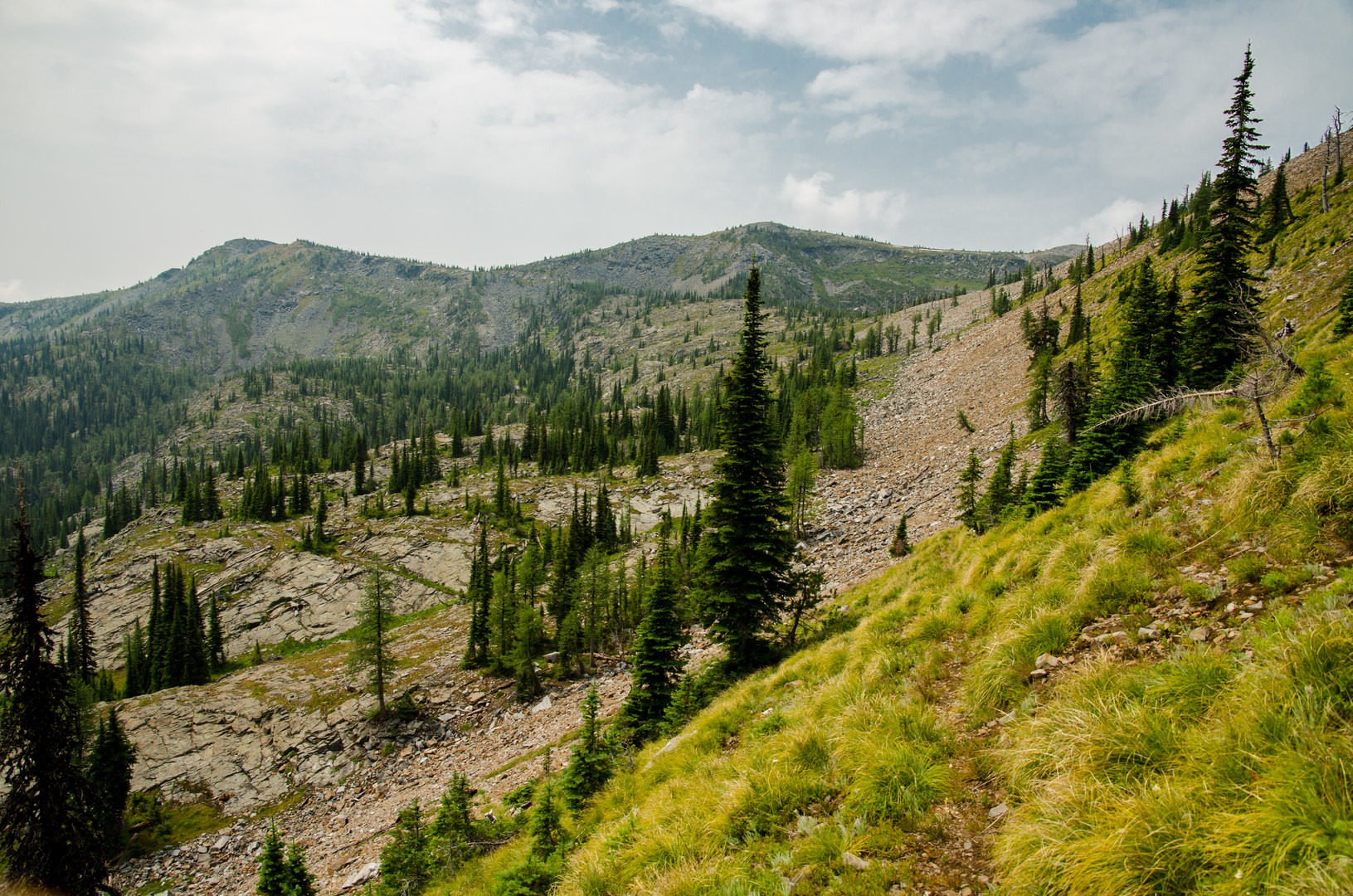You are here
Rolling hills, endless miles of tree-covered hillsides, wildflower blooms, and the prevailing sense of wandering alone in the woods: these are the sights and feelings that await hikers of this and the next few sections of the Pacific Northwest Trail as it continues its way west from Montana into the stretches of northern Idaho's Panhandle. Most of the hike from Yaak to Bonners Ferry is on trail, and conditions are mixed in terms of how overgrown it will get. But first, there is a long road walk that's partly paved and partly on a well worn Forest Service road.
On this section of the PNT, it becomes unavoidably noticeable that the rocky mountain vistas and remote mountain lakes have given way to mostly forested sections of trail, the at-times long road walks on dirt Forest Service roads, and interspersed views of rural farm country in the northeastern sections of the Pacific Northwest. The trail continues for the entirety of this section less than 10 miles from the border with Canada and has generally attracted ranchers content with a significant distance between themselves and any urban neighbors, not that you'll run into many along the way.
Near the Idaho/Montana border and just to the east of Canuck Peak's summit, the PNT leaves the Kootenai National Forest and enters into the Kaniksu National Forest. Here, the PNT follows the Ruby Ridge Trail and crosses numerous Forest Service roads that lace through the Kaniksu. PNT trail markers become rare and welcome sights to help thru-hikers confirm they are on the right path. Fewer official campgrounds or established backcountry camping sites are found along this section of trail than before, and it's not uncommon for hikers to make their way through this section in long days, hiking until sunset and then setting up camp alongside the trail or road. By this point, barring any injuries, a thru-hiker's routine has become well established, and adding a few long-mile days to increase the average daily mileage becomes possible.
From the Idaho/Montana border, the town of Copeland, Idaho, and the Kootenai River are 31 trail miles to the west. Along the way the trail crosses the Moyie River and climbs 3,500 feet over 6.9 miles to reach the summit of Brussard Mountain. From the mountain's summit the route follows a downward path for roughly 15 miles to reach Copeland. Copeland is a small town on Highway 95 that is 22 miles north of Bonners Ferry, Idaho. Rather than walk the 22 miles each way to and from Bonners Ferry, most thru-hikers will contact a trail angel ahead of time for a ride or find a way to hitchhike the distance there and back.
Bonners Ferry is a critical resupply town along the trail and the largest town yet encountered along the trail for those moving from east to west. Admittedly, with a population of 2,500 residents, it still has a very small town feel. But it has everything you would need for a full resupply, including a Safeway, various restaurants, a few brew pubs, and motels, inns and B&Bs where you can shower and escape the trail for a night. The local police station has also given many hikers permission to sleep in the baseball fields across the river from downtown Bonners Ferry, but you should request permission in advance.
Metaline Falls is the next resupply after Bonners Ferry, and the trail between places offers some of the most challenging terrain along the way in terms of remoteness, trail conditions, and a long off-trail traverse (and bushwhack) that most hikers say is the hardest part of the trip. Luckily it's made up for with a return to some incredibly scenic vistas. Getting recharged and ready for the section ahead in Bonners Ferry is an opportunity few should choose to pass up.
For additional details, refer to the following PNT sections:
Logistics + Planning
Current Weather: Powered by Dark Sky



























Comments
Sign In and share them.